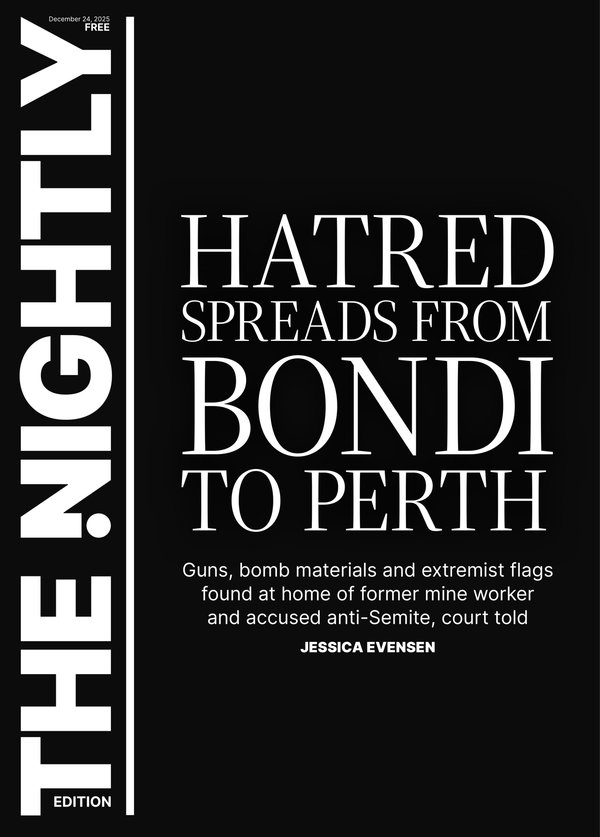AARON PATRICK: Big-money politics and the confected outrage of Zali Steggall

Sydney independent MP Zali Steggall, who raised so much money last election she couldn’t spend it all, crashed a government press conference on Thursday to complain that one of the biggest overhauls to election funding is part of a plot to subvert democracy.
Steggall and her fellow teal politicians have expressed outrage at a law that contains the types of measures they promised to fight for: lower-house candidates will be limited to $800,000 campaign spending a year, donations will become more transparent and state support for elections increased.
Yet Steggall claimed: “The only people who will be able to participate in elections is union members.”
Sign up to The Nightly's newsletters.
Get the first look at the digital newspaper, curated daily stories and breaking headlines delivered to your inbox.
By continuing you agree to our Terms and Privacy Policy.The changes are far from perfect. But the Electoral Reform legislation passed by the Labor Party and Coalition may reduce, a little, political parties’ reliance on union and business donors. As anyone involved in politics knows, money provides access, and parties desperate for money can let bad policy slip through.
Individuals will be limited to $50,000 in donations a year, and lobby groups to $11 million. The limits will prevent Queensland businessman Clive Palmer and other opinionated billionaires splashing tens of millions to elect pet candidates.
Why then would independent MPs who promised to “change the climate in Canberra” oppose the first successful attempt to control election inflation?
Son of a billionaire
The answer may lie with Simon Holmes à Court, the son of the late corporate raider Robert Holmes à Court, who was known in his day as Australia’s first billionaire.
Over the past four financial years Holmes à Court’s fundraising company, Climate 200, raised $24 million for independent candidates. Almost all seek Liberal seats.
One of Climate 200’s most-generous donors is a mysterious 31-year-old weather trader in Tokyo who invests in early-stage climate-change technology. Despite no obvious source of great wealth - he used to manage a recording studio in country NSW called the Cat’s Ass - Marcus Catsaras has given Climate 200 $2.1 million.
This influx of money is driving an elections arms race. When Hobart-based independent Andrew Wilkie got into Parliament, in 2010, his campaign cost $36,000.
Last election, 40 independents, led by Allegra Spender, spent $17 million collectively, up from $5 million the previous election and $2 million in 2016, according to the Australian Electoral Commission.
A lot of the money went to billboards and social media advertisements. That spending on the election has already begun.
Campaign begins
In a sign the 2025 election campaign is underway, even though the polling date has not been declared, Climate 200 was the second-biggest public-announcement advertiser on Facebook over the past three months.
The first? The Federal Government.
The biggest-spending politicians on Facebook over the same time frame were all Climate 200 candidates: Monique Ryan in Melbourne’s Kooyong, Nicolette Beole in Sydney’s Bradfield, Ben Smith in Flinders in country Victoria and Spender in Sydney’s Wentworth.
The law does not come in effect until the following election, when Climate 200 will be limited to spending $100,000 per electorate per year, making it harder for Holmes à Court to flip seats - unless he can get it changed.
A Victorian independent who has received Climate 200 money, Helen Haines, said on Thursday she would seek changes if she helps hold the balance of power post-election. Polls suggest a hung parliament is likely.
State funding
As for Steggall, her primary complaint is the decision to increase government funding for candidates’ campaigns from $3.50 to $5 a vote.
Available to any candidate who receives more than 4 per cent of the first-preference vote, public funding is used in Europe, Britain, Canada and New Zealand. Designed to prevent corruption, the system is a pragmatic recognition that voters pay for election campaigns either way. Political donors usually want a return on their investments.
In Steggall’s world, private donors make for a healthier democracy than state funding.
On Thursday she asked Special Minister of State Don Farrell, while he was giving a press conference on the new law: “Why don’t you tell the Australian people what is going happen: the big money that will be in politics is the public money?”
Based on the last election, Steggall would receive about $200,000 in election funding from the government, which she does not need because she can tap into rich donors who enjoy playing politics.
The other teal independents are even more cashed up. Zoe Daniel received $1.75 million last election and spent $1.56 million. Kate Chaney got $1.33 million and spent $973,000. Allegra Spender spent $2.1 million. Sophie Scamps spent $1.54 million.
Steggall portrays the law as a big-party conspiracy to squeeze out the independents, even though the government has gone out of its way to get her and the others onside. Steggall must know this. She had a dinner with the Prime Minister at The Lodge on Tuesday evening with other independents.
While political parties are perennially disappointing, the stability provided by Australia’s two-party-type system is one reason Australia is one of the world’s wealthiest countries.
If the teals secure the balance of power, Holmes à Court will potentially be one of Australia’s more powerful men. Who elected him?

